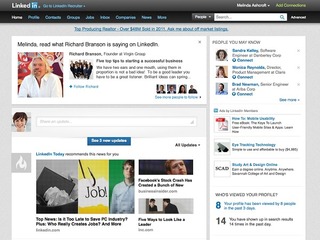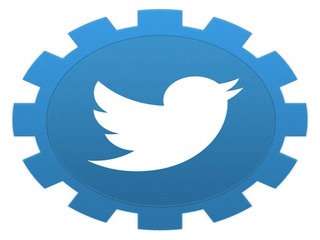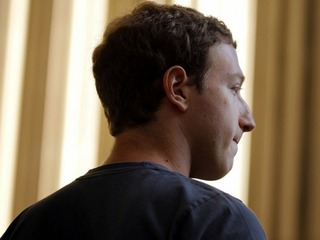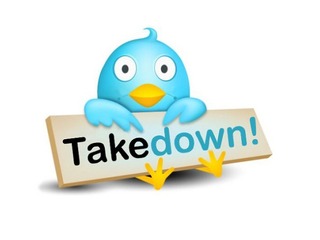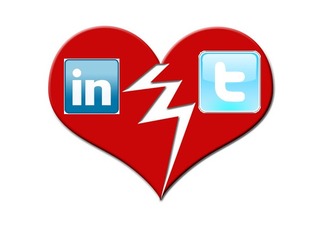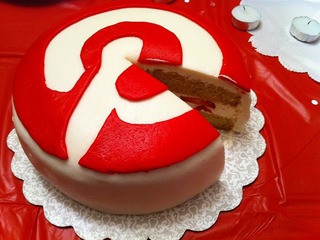New disease models unlocking secrets to neurological research
Advances in technology, like in vitro and microfluidics, have helped advance research
Read more...
2012 was an interesting year for social media. The old guard (if you can call them that) suddenly saw challengers from a couple of upstarts in Pinterest and Instagram. They also finally seemed to unlock the key to getting advertisers on their sites, while shifting to mobile.
Here are the biggest events to happen in social media this year:
1. Twitter/Instagram war
As we all know, Facebook bought Instagram in April for $1 billion. While this was a mutually beneficial move for both companies, it created a rift between Instagram and Twitter that only came to a head at the end of this year.
The first sign of trouble began in November, when Twitter decided it was going to launch filters on its camera app in the next few months, essentially ripping off Instagram’s idea.
Then, on December 5, Twitter announced that Instagram had removed the ability for its photos to be embedded onto Twitter Cards, causing them to appear cropped. A mere five days after that announcement, Instagram took its photos off of Twitter altogether.
As a result, Twitter released its own set of eight photo filters for its iOS and Android apps the same day, ahead of schedule.
It was hard to see the news as pretty ironic since, in June, Twitter pulled a similar move against LinkedIn, no longer allowing Twitter posts to appear on LinkedIn profiles because it did not want other parties, such as LinkedIn copying their content.
The war may have actually started with Instagram backing out of a verbal agreement to be bought by Twitter for $525 million in March, weeks before it was purchased by Facebook.
2. The year everyone wanted to be Pinterest
Perhaps the biggest surprise of 2012 was the sudden and meteoric rise of Pinterest.
In May, Pinterest topped Twitter and Bing in referrals, then, in June, Pinterest had more referral traffic than Twitter, StumbleUpon, Bing and Google combined. Pinterest finally overtook Yahoo organic traffic in August, making it the fourth largest traffic source in the world.
Pinterest has now seen its referral traffic increase for seven straight months, and a September study from Pew Internet & American Life Project found that found that 12% out of 1000 people said they use Pinterest, and of those, the vast majority were women. A full 19% of online women are now on Pinterest.
As a result, there have been a number of startups and services that have come out recently that have been been designed to resemble Pinterest, including eBay and Facebook.
In September, Newzstand debuted its NewzSocial App, which is a news aggregator that allows its users to create niche channels and share them with their friends on social networks. Like Pinterest, users create their own channels, which can be about anything they want them to be. The same month saw the release of Wanderful, a Pinterest for local papers, with platform that displays advertisements in a engaging and social way, and which its CEO says will look like Pinterest.
In September, discovery engine StumbleUpon launched its latest redesign, which copied, you guessed it, Pinterest.
In October, eBay redesigned its website to look like Pinterest as well, allowing its users to curate items and put them into a personalized homepage feed. The same month, Facebook added a new feature called Collections, where, if users have Liked a certain company, let’s say Pottery Barn, images of products will show up on their news feed. If they click on the product and they want it, they can add it their wishlist by "liking", "collecting" or "wanting"
3. The fall of Zynga
While Pinterest became the darling of the social media world this year, Zynga became something of a pariah.
After a lackluster IPO in December 2011, the company saw its stock fall all throughout 2012, causing its executives leave in droves.
In October, Zynga released a statement saying that it was lowering its outlook based on disappointing preliminary third-quarter results. Due to Zynga’s weak performance, JP Morgan analyst Doug Anmuth has lowered his estimates for Facebook’s payments revenue in 2013 to $582 million from $797 million, based on how much of its revenue would be coming from Zynga.
It was just the latest step in the declining relationship between the two companies, which had seen its once mutually beneficially partnership crumble as Zynga’s games became less popular, and the company became more dependant on Facebook for revenue, even as the amount of revenue Facebook was getting from Zynga was declining.
Then, finally, in November, Zynga and Facebook filed documents with the SEC to loosen the relationship between the two companies.
According to the documents, Zynga will no longer be obligated to display Facebook ads, or use Facebook credits in its games on its own platform. Any games offered on its platform, or other platforms, will still have to be offered on Facebook too, though there are some exceptions regarding real-money gambling games, mobile games and games launched in China or Japan.
Don't count Zynga out just yet, though, as there are signs that the company may have some life in it, including a deal with cloud-based television company Synacor to bring its games to Synacor’s 45 cable, satellite and telecom companies, starting in 2013.
4. Facebook IPO
In May Facebook raised $16 billion for its IPO, the largest ever for a tech company, when it priced its shares at $38. While Facebook’s stock did manage to rise over 12% to spike at $42.05, it eventually came down again, ending at $38.23, a mere 0.6% rise over its initial price. Not exactly earth shattering. In fact, very anticlimactic - given the hoopla leading up to the big event.
But what happened afterward is what everyone will remember.
In the days after the IPO, it became a giant mess, with lawsuits from investors and investigations by government agencies and both Houses of Congress. Everyone involved in the IPO, from Facebook, to its underwriters, to Nasdaq, was sued by somebody.
Morgan Stanley, along with other Facebook underwriters such as JP Morgan, Goldman Sachs and Bank of America, cut revenue forecasts for Facebook just days before the IPO. That much is common knowledge at this time. The question became: did the banks only lower their forecasts because Facebook told them to? And did they only tell their top clients about their lowered projections and leave smaller investors with false information?
It was also revealed that Nasdaq had experienced technical problems just before the Facebook IPO this past Friday. A large number of cancellations resulted in a 30-minute delay in the opening of the stock and caused Nasdaq to experience a backlog of order messages that it was not able to deliver to investors for up to six hours. This lead to a class action lawsuit against Nasdaq.
5. Election sets Twitter records
Barack Obama's reelection in November saw three records broken in one night: Election Night 2012 had the most Tweets per minute, the most retweeted Tweet, and it became the most Tweeted about event in U.S. political history.
As it was announced that the President had emerged victorious, Twitter set a new record of 327,452 Tweets per minute, shattering the previous record of 116,000 TPM set by the Spice Girls during this summer’s London Olympics.
Obama also now has the most retweeted tweet of all time, with a photograph that he put up right before going out to give his victory speech, of him hugging his wife. The photo has been retweeted over 810,000 times, and favorited over 300,000 times.
In addition to breaking these records, Twitter also also added some pretty big names to its roster this year, including Steve Carell, Matt Lauer, Chelsea Clinton, Niel Young, Brett Favre, VP candidate Paul Ryan and British Prime Minister David Cameron.
And, of course, The Pope, who gained nearly 200,000 followers within hours of joining earlier this month. His English account alone now has 1,223,647 followers.
The Pope's first Tweet, send out on December 12, has been retweeted over 62,000 times, and favorited over 23,000 times.
6. Twitter's new API
In August Twitter released its new API, which put more restrictions on third party developers in order to get users to use apps designed and released by Twitter instead,
The new restrictions made it so that applications that have more than at least 100,000 users will have to work directly with Twitter on their product, policies and service agreement. Those that already have more than 100,000 user can only grow to 200% of their current size before they will contact Twitter.
The decision was controversial, to say the least, as it was not clear if the changes that Twitter made were to actually benefit users, or to only really benefit Twitter. At least one popular third part app on Twitter, Tweetbot, was forced to stop testing citing problems its had getting around the new guidelines set by Twitter.
Tweetbot is meant to enhance the Twitter experience on iOS with features including multiple account switching, in-timeline viewing of images, push notifications, and the ability to mute certain followers and topics in the timeline view.
7. Facebook hits one billion users
In October, Facebook announced that the site had reached one billion monthly active users.
That is one billion people logging into Facebook every single month. Let's put this in perspective: the number of people occupying the planet right now is just under 7 billion. That means that one out of every seven people alive went on Facebook in September.
In addition to reaching the user milestones, Facebook has also announced it had 1.13 trillion likes since launching them in February 2009. The site has 140.3 billion friend connections, 219 billion photos currently on the site, 17 billion location-tagged posts and 62.6 million songs that have been played 22 billion times.
Compare that to Twitter, who recently announced that it had reached 200 million active users!
8. LinkedIn important people
In October, LinkedIn began allowing members to follow “150 of the most influential thought leaders on LinkedIn who will be sharing unique knowledge and professional insights.”
These thought leaders include Barack Obama, Arianna Huffington, Richard Branson, Mitt Romney, Reid Hoffman, T. Boone Pickens, Cory Booker, Ben Smith, and Deepak Chopra.
Users who follow these people will get their status updates, as well as original posts that they have written, with videos, photographs and Slideshare presentations. Users are able to like and comment directly on posts, and share them with their network.
This is not the first time LinkedIn has added a follow feature to its site. In April 2010, LinkedIn began allowing users to follow company profiles. This is the first time, though, they that can follow other users.
LinkedIn has to be hoping that by including original content it will drive up its user engagement.
LinkedIn's U.S. users only spent an average of 20.6 minutes on its website in August, according to comScore, compared with an average of 402.9 minutes for Facebook users,. LinkedIn users made an average of 5.4 visits to its website in August, compared with 35.6 visits by users on Facebook.
9. Facebook newsfeed ads
2012 was the year Facebook finally figured out how to make money off of advertising, and they did it by injecting ads into mobile news feed/
The ads appear in user News Feeds as what looks like suggestions, or recommendations, for which apps a user may like. For example, it may come under the header "try these games." Once a user clicks on one of the ads, or suggested apps, they will be redirected to either the iOS App Store or to Google Play to purchase that app.
The ads can be specifically targeted to certain audiences, specified by age group, gender and region. Tools will also be provided to the developers that will help them monitor the effectiveness of the advertisements
Mark Zuckerberg has said that they are more effective than desktop ads, and they are so profitable that eMarketer revised its mobile ad spending projections for the year Monday, based simply on the results of those advertisements.
10. Social media and Hurricane Sandy
During the height of Hurricane Sandy in October, Facebook, Twitter and Instagram all became useful tools for keeping up with what was going on and helping to tell the story.
Simply by looking at the trending topics both during the height of the storm, and in the aftermath once the storm died down, most messages were personal, with people relaying messages to their loved ones to “stay safe/be safe,” or telling them that they were in their prayers. Twitter, on the other hand, became a place for spreading photos and videos of what was going on in New York.
The real story of how social media reacted to Hurricane Sandy was on Instagram where people posted 10 pictures of the hurricane every second.
The hurricant photos have been aggregated onto a website called Instacane.com, which describs itself as, "the story of hurricane sandy told through instagram."
The site was created during Hurricane Irene in 2011, and it pulls a feed of photos from Instagram of Hurricane Sandy and shows them in real time. The photos must be made public and posted to Twitter with the hashtag #Sandy to be pulled.
Sharing experiences through photos is a new phenomenon, and it makes you wonder if Instagram could pose a serious challenge to other social networks in the future.
(Image source: https://memarketingservices.misytedev.com)
Advances in technology, like in vitro and microfluidics, have helped advance research
Read more...Robots are taking over the heavy lifting work inside warehouses
Read more...The company also expanded access to 12 different provider types for male fertility care
Read more...